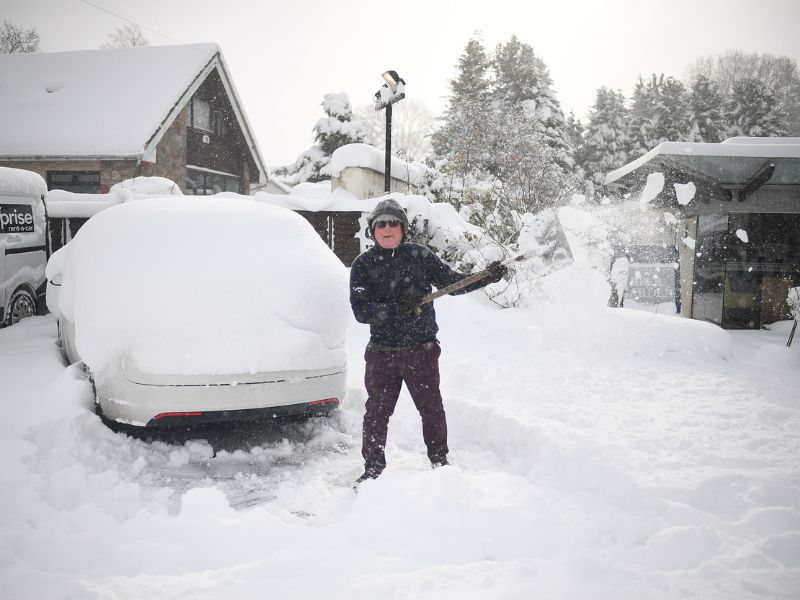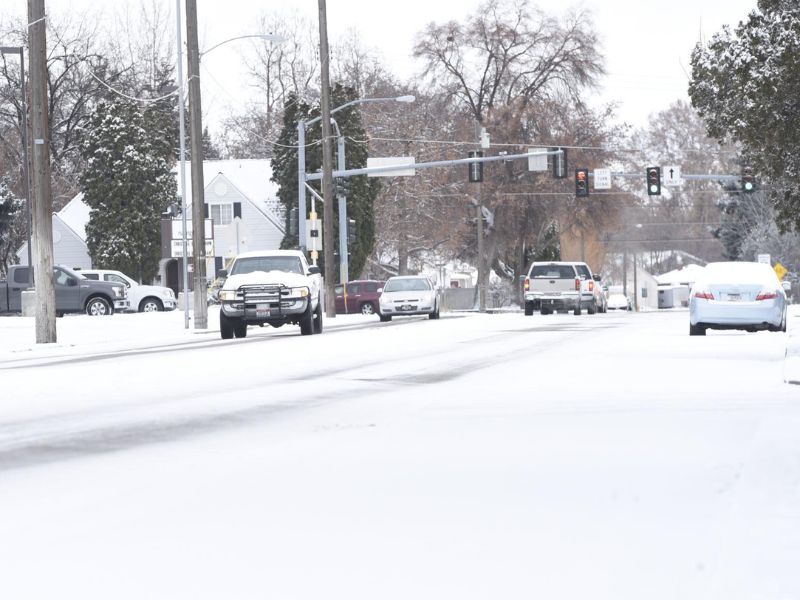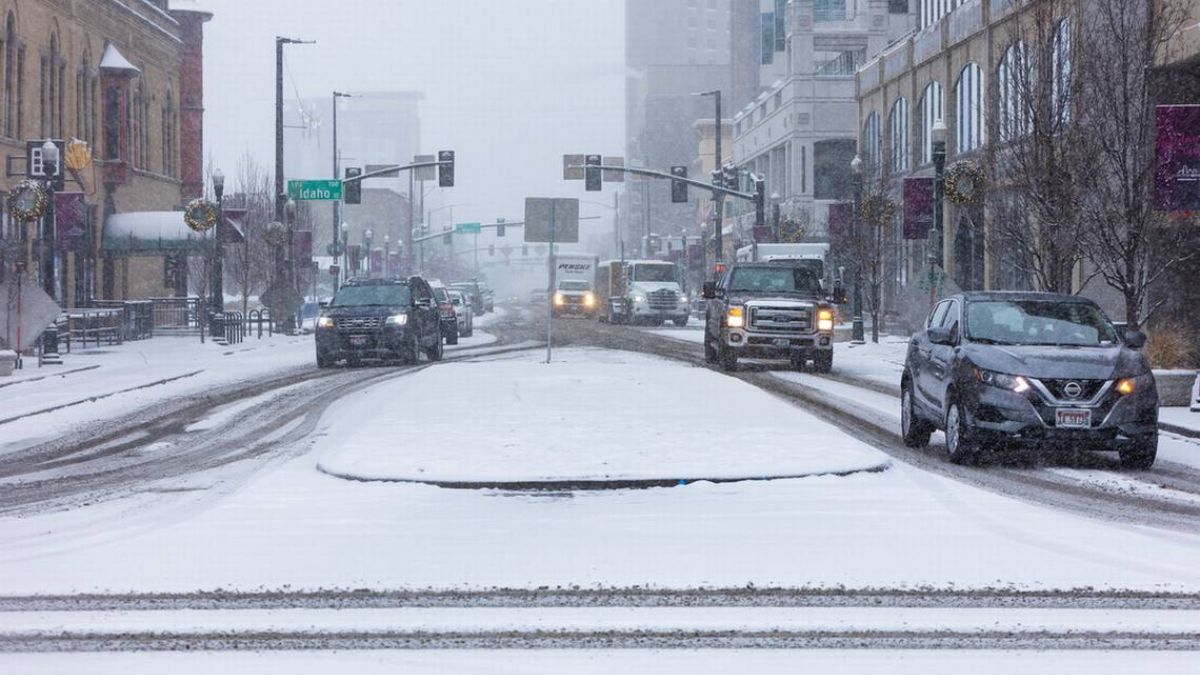Yes, Caldwell, Idaho, does experience snowfall during the winter months. As mentioned in the previous response, Caldwell has a continental climate, characterized by cold winters. On average, the city receives around 10 to 15 inches of snowfall per year.
The snowfall typically occurs from late November to early April, with peak snowfall months being December and January. While not as extreme as some mountainous regions, Caldwell residents can expect a moderate amount of snow, which can impact daily life and require snow management strategies to ensure safe passage on road.
Caldwell, Idaho, is a city located in the western United States, known for its agricultural heritage and small-town charm. As with many places in this region, the question of whether it snows in Caldwell is a common inquiry.
In this article, we will explore the winter climate of Caldwell, delve into its historical snowfall data, and discuss the impact of snow on the city and its residents.
Location Overview of Caldwell
Caldwell is a charming city located in the southwestern part of the state of Idaho, United States. It is situated within Canyon County, approximately 25 miles west of the state capital, Boise. The city lies in the heart of the Treasure Valley, a fertile agricultural region known for its abundant farmlands and picturesque landscapes.
Some surrounding cities and towns are:
- Boise
The state capital, located about 25 miles east of Caldwell, is the largest city in Idaho and a significant economic and cultural hub in the region.
- Nampa
Caldwell’s neighbor to the east, Nampa is another major city in Canyon County, known for its industrial and agricultural contributions.
- Middleton
A smaller city to the northeast of Caldwell, Middleton, also lies in the heart of the agricultural Treasure Valley.
- Notus
Located southwest of Caldwell, Notus is a small town known for its strong sense of community.
Caldwell is situated in a relatively flat valley, the Treasure Valley, surrounded by mountain ranges. The Owyhee Mountains lie to the south, while the Boise Mountains are found to the northeast. The valley is traversed by the Boise River, which flows through Caldwell and provides essential water resources for the region’s agricultural activities.
Caldwell offers a variety of recreational opportunities for its residents and visitors. The city has parks, trails, and recreational facilities for outdoor activities. Lake Lowell, located just southwest of Caldwell, provides opportunities for boating, fishing, and birdwatching.
Caldwell, Idaho, is a vibrant city situated in the picturesque Treasure Valley. With its agricultural heritage, proximity to major cities, and recreational opportunities, Caldwell offers a pleasant living environment for its residents and remains an attractive destination for visitors seeking a taste of the Idaho lifestyle.
Geography and Climate of Caldwell
The geographical location of Caldwell significantly influences its snowfall patterns. Situated in the Treasure Valley, surrounded by mountain ranges, the city experiences a continental climate with cold winters.

The valley’s topography allows cold air to become trapped during winter, leading to temperature inversions and contributing to colder conditions. The nearby Owyhee and Boise Mountains also act as barriers, impacting weather systems and moisture availability.
These geographical features contribute to the moderate snowfall experienced in Caldwell, with average annual snowfall ranging from 10 to 15 inches. While not as extreme as some mountainous regions, the combination of valley geography and surrounding mountains plays a crucial role in shaping the city’s winter climate and the frequency of snow events.
Summers are typically hot and dry, with temperatures often exceeding 90 Fahrenheit. Winters are cold, with occasional snowfall and temperatures dropping below freezing. Spring and fall offer milder temperatures and pleasant weather.
Historical Snowfall Record of Caldwell
To determine whether Caldwell receives snowfall, it is essential to analyze historical weather data. The historical snowfall record of Caldwell, Idaho, reveals a pattern of moderate snowfall during the winter months.
While snow events can vary from year to year, several notable snowstorms have left a lasting impact on the city:
- December 1915 Blizzard
One of the most severe snowstorms in Caldwell’s history occurred in December 1915. The blizzard brought heavy snowfall, strong winds, and freezing temperatures, causing widespread disruptions and challenges for residents and businesses.
- January 1949 Snowstorm
In January 1949, Caldwell experienced a significant snowstorm that brought several inches of snow to the region. The storm led to school closures and transportation difficulties.
- January 1969 Snowstorm
Another memorable snowstorm struck Caldwell in January 1969, dumping substantial amounts of snow and affecting daily life and travel in the area.
- February 1986 Snowstorm
In February 1986, a powerful snowstorm impacted the entire Treasure Valley, including Caldwell. The storm brought heavy snowfall and caused disruptions to transportation and infrastructure.
- December 2013 Winter Storm
In December 2013, a winter storm brought a significant amount of snow to Caldwell and the surrounding areas. The city experienced travel disruptions, school closures, and challenges in snow removal.
While these notable snow events have left lasting memories, Caldwell’s winter climate typically sees a more moderate amount of snowfall compared to some other parts of the country.
Winter Season & Snowfall Pattern of Caldwell
The average snowfall in Caldwell typically ranges from 10 to 15 inches per year. However, there have been instances of higher snowfall amounts during particularly snowy winters. While not as extreme as some mountainous regions, Caldwell residents can expect a moderate winter snow cover that can impact daily life.

Snowfall in Caldwell usually occurs from late November to early April, with peak snowfall months being December and January. Snow events can vary from light dustings to more substantial accumulations, leading to occasional snow days and impacting travel and daily routines.
The effects on Caldwell’s winter climate may become more pronounced as the world grapples with climate change. While the city has historically experienced moderate snowfall, rising global temperatures could alter weather patterns and result in milder winters. Such changes might impact local ecosystems, agriculture, and water resources.
Locations to Enjoy Snow in Caldwell
While Caldwell, Idaho, may not receive as much snowfall as some mountainous regions, there are still several nearby locations where residents and visitors can enjoy snow-related activities during the winter months. Here are some places to experience the snow in and around Caldwell:
- Bogus Basin Mountain Recreation Area
Located about 40 miles northeast of Caldwell, Bogus Basin offers winter enthusiasts a range of snow activities. This ski resort features downhill skiing, snowboarding, tubing, and cross-country skiing, making it a popular destination for snow lovers of all ages.
- Lake Lowell
Just southwest of Caldwell, Lake Lowell is a picturesque spot for enjoying the winter scenery. Visitors can go for a leisurely walk or hike around the lake’s perimeter, and if conditions permit, some areas may be suitable for ice skating.
- Weston Winery and Vineyards
Located in nearby Canyon County, Weston Winery offers a unique experience of wine tasting amidst a winter wonderland. The vineyards and surrounding landscape can be particularly charming after a fresh snowfall.
- Caldwell Parks
Several parks within Caldwell offer opportunities for winter activities. Memorial Park and Indian Creek Plaza, in particular, may have seasonal events like ice skating or winter festivals, providing a festive atmosphere during the colder months.
- Hiking Trails
When snow blankets the nearby foothills, hiking trails in the Owyhee Mountains and Boise Mountains offer a serene setting for winter hikes. Just ensure proper clothing and equipment for colder conditions.
- Nearby National Forests
Within a reasonable drive from Caldwell, you’ll find the Boise National Forest and Payette National Forest. These areas provide ample opportunities for snowshoeing, cross-country skiing, and snowmobiling in designated areas.
- Caldwell Night Rodeo Grounds
While it may not be snowy all the time, the Caldwell Night Rodeo Grounds occasionally host winter events, such as holiday markets or winter carnivals, creating a festive atmosphere for families.
Whether it’s hitting the slopes at a nearby ski resort or enjoying a peaceful winter walk, there are plenty of ways to savor the snowy season in and around Caldwell.
Factors Influencing Snowfall in Caldwell
Several factors influence snowfall patterns in Caldwell, Idaho. The city’s continental climate, characterized by cold winters, plays a significant role. Caldwell’s topography contributes to temperature inversions, trapping cold air during winter and leading to colder conditions.
These geographical features also influence weather systems and moisture availability, impacting the frequency and intensity of snow events. Additionally, prevailing wind patterns and the proximity to bodies of water can influence the amount of moisture available for snowfall.
While Caldwell may not receive as much snow as mountainous regions, these factors collectively shape its winter climate and contribute to the moderate snowfall experienced in the area.
- Recommended: Does It Snow In Miami? All About Miami Climate
Conclusion
Caldwell, Idaho, does indeed experience snowfall during the winter months. With an average snowfall of 10 to 15 inches per year, residents can expect a moderate winter climate with occasional snow days and adjustments to daily routines.
While snow can present challenges, it also offers outdoor recreation and holiday enjoyment opportunities. As climate change continues to be a global concern, monitoring its impact on Caldwell’s winter climate remains crucial for understanding and adapting to potential changes in the future.
